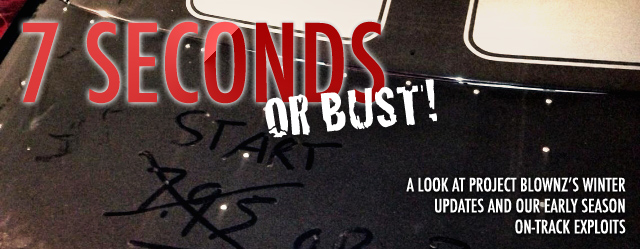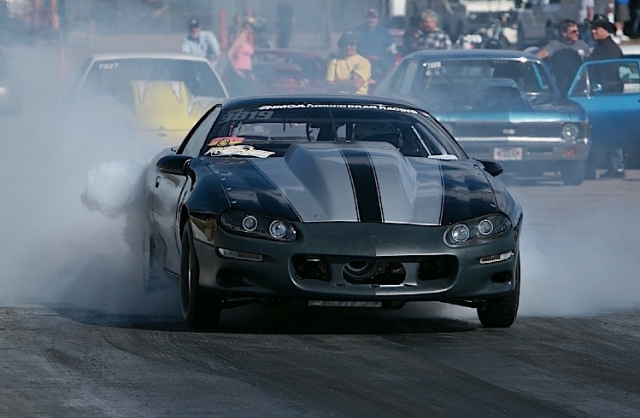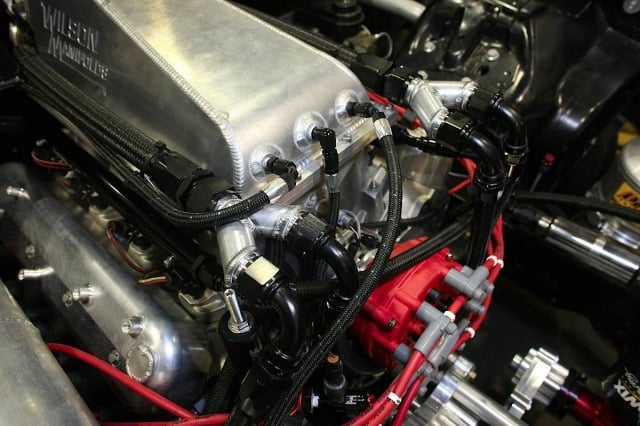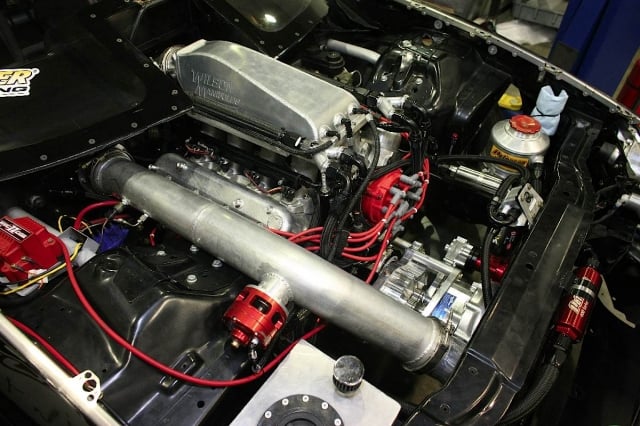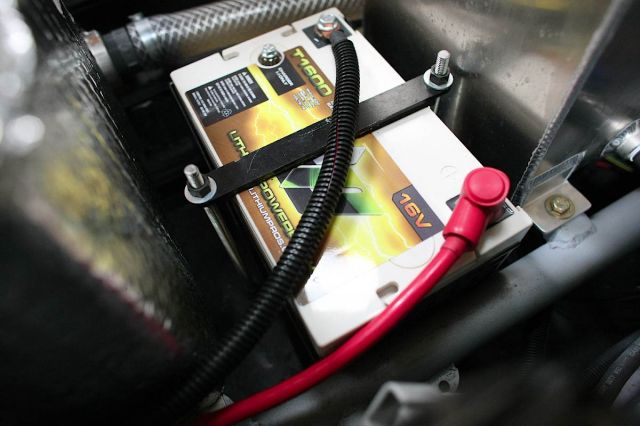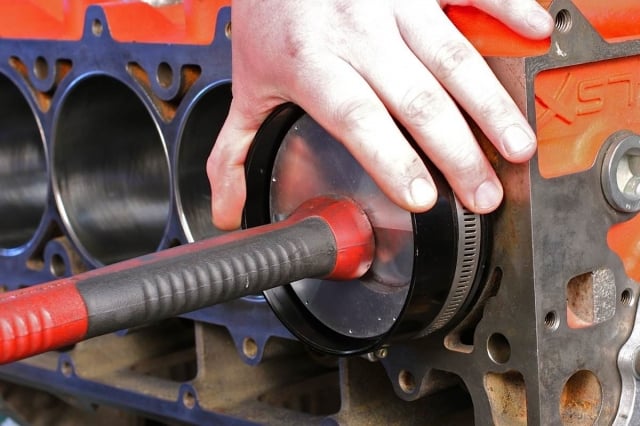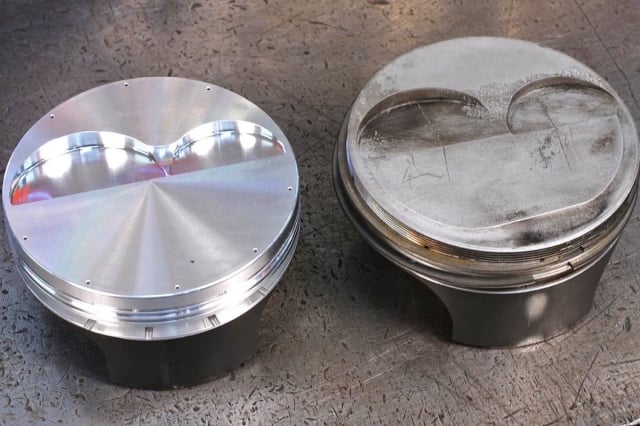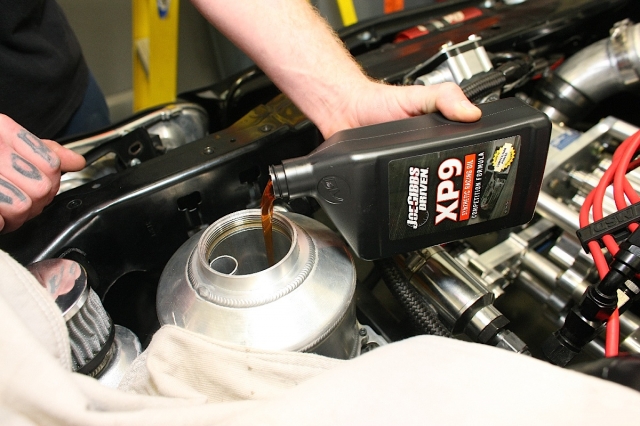If you’ve been following along with the recent updates on our Project BlownZ 275 Drag Radial Camaro, you know that we’ve already hit the track twice this spring, including a test outing at the local 1/8-mile track in nearby Barona, Calif., followed by the West Coast Hot Rod Association (WCHRA) season opener in Bakersfield. Despite the fact that we’re new to this whole heads-up drag racing game and we’re learning what the car wants as we go along, we made some great progress last season and gained a lot of insight on what areas we needed to focus on over the winter to come out in fighting shape for the 2013 campaign. And that meant some changes were in store — some of them we had already planned on, and others the direct result of things we learned as we hit the track and made laps.
At the end of last season, we made a few changes to the car to improve in some areas, including the addition of Chris Alston’s Chassisworks’ trick new CDS supercharger gear drive unit. This move, as we discussed in our in-depth feature on the gear drive, necessitated the removal of the radiator to accommodate the size of the gear drive in the nose of the car and so that we could run an inlet to the blower. In place of the radiator, we installed a new water tank from Chiseled Performance paired with a Rule 3700 series pump in the trunk. On the engine, we now have water lines runnig down the sides of the intake manifold that “T” off into the standard water pump inlets for the engine. There’s a manual valve that controls the flow of the water to the motor — basically a hand-controlled thermostat.
Because the gear drive, with its optional accessory drive system incorporated into the design, also offered us the ability to run our brand new belt-driven Hex Drive fuel pump from Aeromotive directly off the crankshaft, we were able to eliminate some power draw from the battery. This meant we could, as we had planned, eliminate the cost and the weight of a second battery onboard the car. It was here that we also turned to the folks at Lithium Pros and one of their ultra-lightweight, high-output lithium batteries, which tips the scales at just nine pounds and provides plenty of juice to run everything in the race car.
Elsewhere on the car, we also switched our axles over to a set of Moser Engineering’s gun-drilled parts, along with a fresh new aluminum center section to shave some weight out of the car.
The most wholesale of changes, however, and the ones that we hope will bring us up into the same performance bracket as our competitors in the 275 Drag Radial class that are running well into the seven-second zone, were in the engine and power adder department.
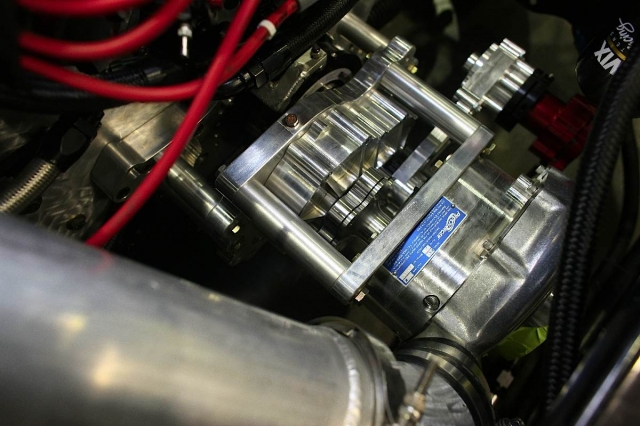
The new Chassisworks CDS gear drive unit that drives our new ProCharger F1-X supercharger. With the new blower, we’re anticipating making in the area of 1,650 horsepower. This gear drive also incorporates a belt-drive for our new Aeromotive Hex Drive fuel pump, meaning we can run the pump right off the crankshaft and eliminate power draw from the battery.
From the outset of our project a year ago, we had every intention of eventually switching over to ProCharger’s then-brand new F1-X supercharger, which was taking the NMCA, NMRA, and 275 radial tire tanks by storm right out of the gate after ProCharger released them into the wild. We had built our 388-inch LSX powerplant around the ProCharger F1-R, and for our first season, we wanted to work the bugs out of that combination and see how well we could make it run before we stepped up with the bigger blower in 2013. With more consistent laps under our belt and a best of 8.24 (making BlownZ the quickest and fastest magazine drag project car in history), we were itching to go the next level in 2013, and the decision was made to move forward with the addition of the F1-X during the off season. In addition to the power adder swap, we also had our Kooks Custom Headers coated by the folks at Jet-Hot before we re-installed them onto the car.
Over the winter, we pulled the 388-inch LSX bullet and rebuilt it with a set of 9.75:1 compression pistons from JE Pistons, down from the 11.5:1 pieces we ran a year ago with the smaller F1-R blower.
Of course, we knew the extra boost from the new blower was going to require some other changes, not the least of which was our tune-up once we got to the track. Last year, we had some 11.5:1 compression pistons in the engine with the F1-R, but during the winter, we pulled the engine and performed a re-build with some of JE Pistons’ 9.75:1 pistons. This would help us exponentially as we began shoving 28+ pounds of boost into the cylinders this season. Although we don’t have any concrete numbers just yet, we’re estimating the supercharger and piston change to net us somewhere in the neighborhood of 1,650 horsepower — enough to get us into the sevens once we line out all of the gremlins that have slowed us down thus far.
This season, we’ll be utilizing Driven’s XP9 10-W40 synthetic oil that’s specifically formulated for high-horsepower racing engines. XP9 has an advanced zinc/phosphorus-based anti-wear package that protects aggressive cam profiles and has synthetic base oils that protect from high temperatures and viscosity breakdown. Friction reducing additives help fight valvetrain wear. Naturally, as a racing-minded oil, XP9 is compatible with methanol and high octane racing fuels.
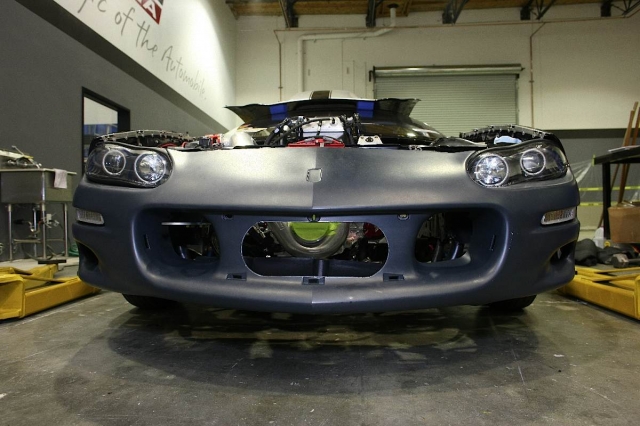
Because the F1-R supercharger that we had in the car previously was more off-center and the CDS gear drive is centered, we had to put a new nose on the car with a center-cut hole to align the air inlet for the blower.
In the cosmetic department, because our F1-R was positioned at more of an offset angle and the Alston gear drive and F1-X are more centered in the car, we also had to install a new nose piece and fabricate a new air inlet.
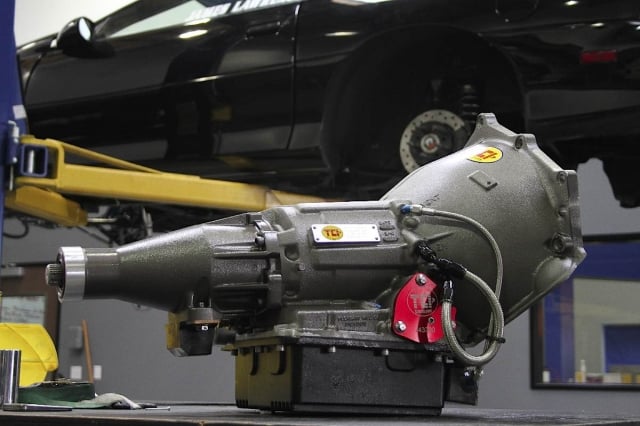
We called upon our friends at TCI Automotive for a beefier transmission and converter combo to pair with our new F1-X combo for 2013. What we have now is one of their Pro-X Powerglide transmissions (similiar to the Pro-X we ran previously, but with a newer full-bearing bearing case and tail housing, among several other upgraded attributes. The new converter is a 9.5-inch model.
Moving to the rest of the drivetrain, we called upon our friends at COMP Cams and their TCI Automotive division to help us make some improvements and upgrade our transmission and converter combo to better handle the increased horsepower on the radial tires. What we have in the car now is TCI’s latest Pro-X Powerglide transmission similar to the Pro-X we ran last year, albeit with a newer full-bearing case and tail housing, a ringless shaft, aluminum gerotor pump, a billet servo, die-cast aluminum pan, and a ten-clutch drum setup in high gear. We’ve paired the new transmission with a new converter, also from TCI, measuring 9.5-inches with one of their own mechanical diodes installed.
Despite some hiccups in our first couple of outings, we loaded up and headed to the NMCA WEST season opener at the Auto Club Famoso Raceway in Bakersfield earlier this month with our focus on getting that seven-second run. And while we did get close — really close as a matter fact — the magic number still eludes us.
On Friday in Bakersfield, we didn’t get to make our planned hits at the famous quarter mile strip due to some strange noises that we noticed during our initial fire-up in the pits. The crew spent the day diagnosing the problem and getting prepared for Saturday’s qualifying, where BlownZ clicked off its best run to date, an 8.058 at 152.00 mph after boss-man and driver James Lawrence clicked it off at 1,000-feet. Unfortunately, a snafu in the staging lanes with our warmup procedure left us unable to fire the car for the final qualifying session, so we had to settle with the 8-oh on the qualifying sheet.
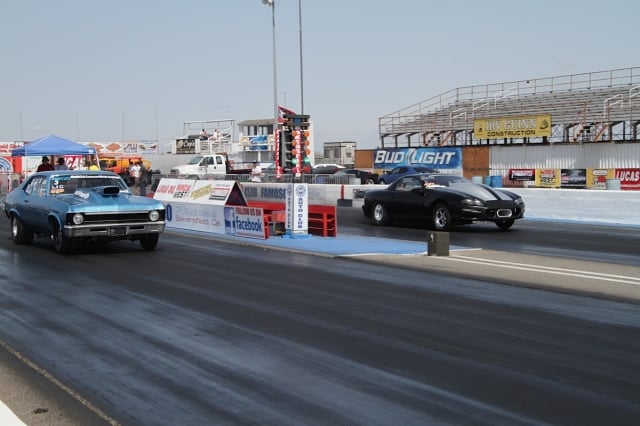
Although we missed the seven-second run we came for, we did make our two best passes to date in Bakersfield, including an early shutoff 8.05 in qualifying and an 8.06 in the 275 Drag Radial final against Artis Houston.
Our opponent in the 275 Drag Radial class, Artis Houston, had our number all weekend, with a 7.61 in qualifying and a killer 7.41 in the final round on Sunday, but BlownZ was right in the ballpark of the qualifying numbers, running an 8.06 at 172.63 mph. It wasn’t the 7.9-second run we came for, but we’ve made steady progress and our near-term performance goal is literally right around the corner. Barring catastrophe, we hope to share with you the story of our first seven-second lap in our next Project BlownZ update. Our eventual goal for the existing 388ci LSX engine is 7.50’s. Stay tuned!



